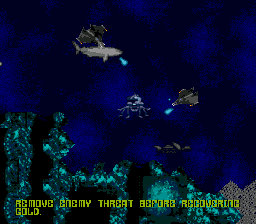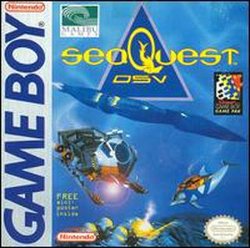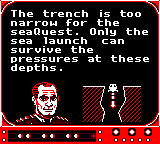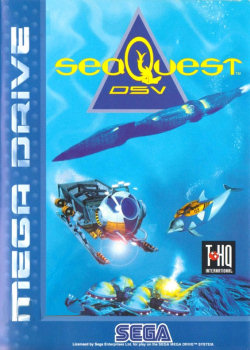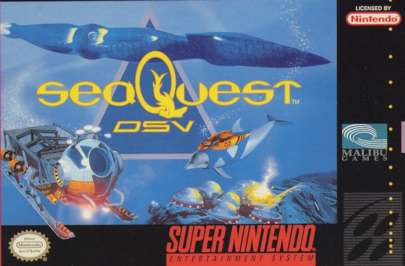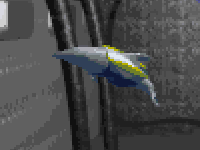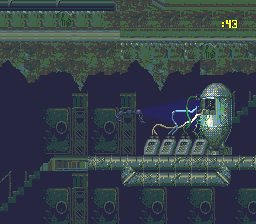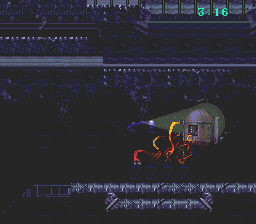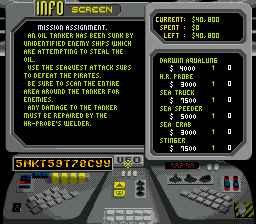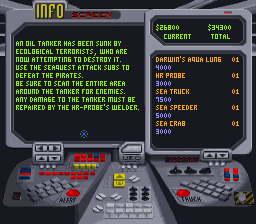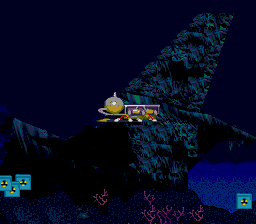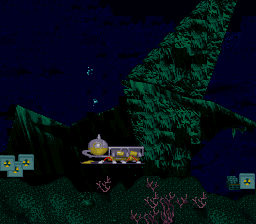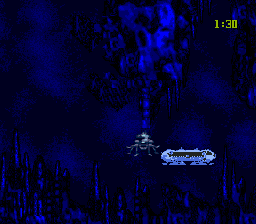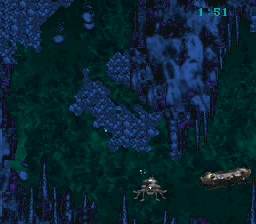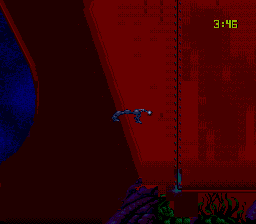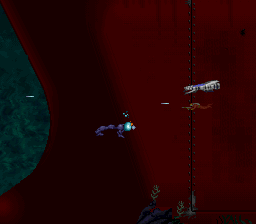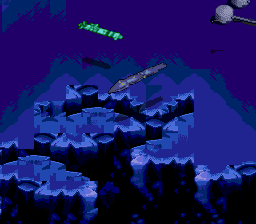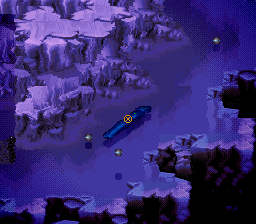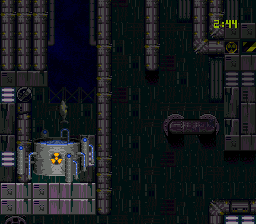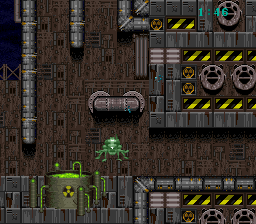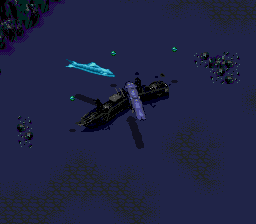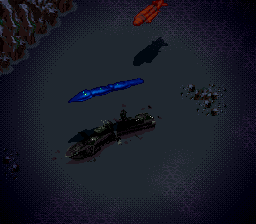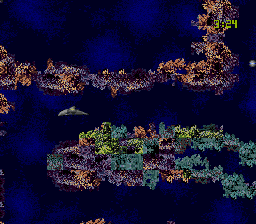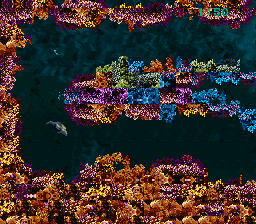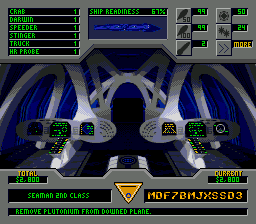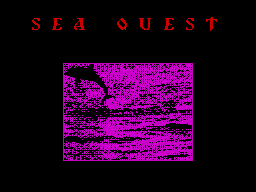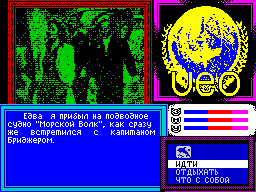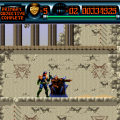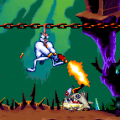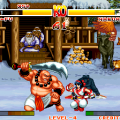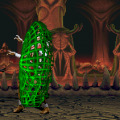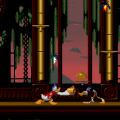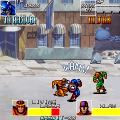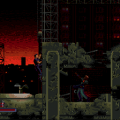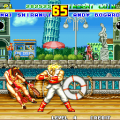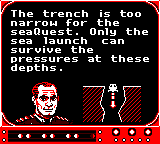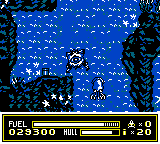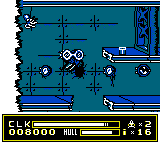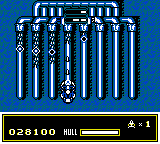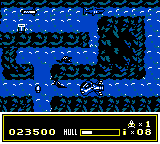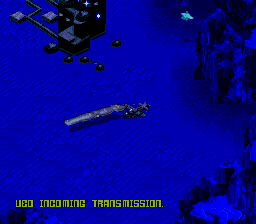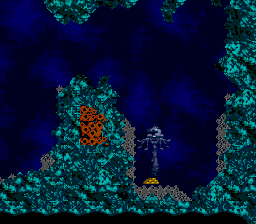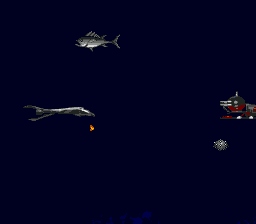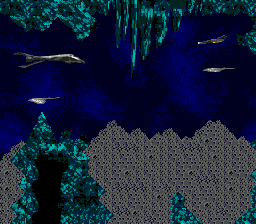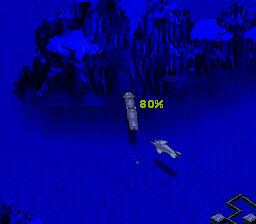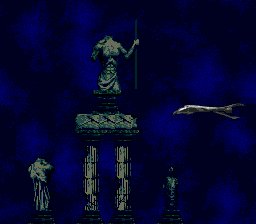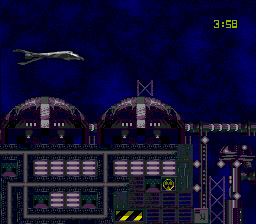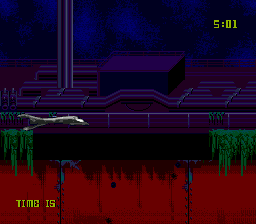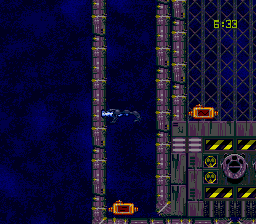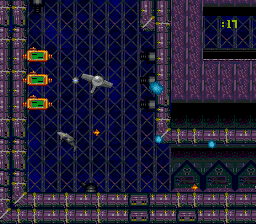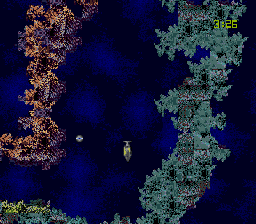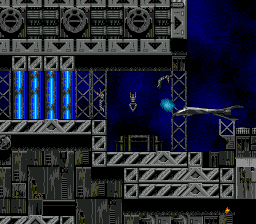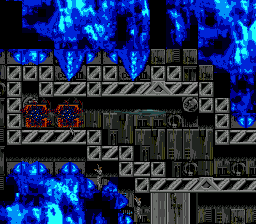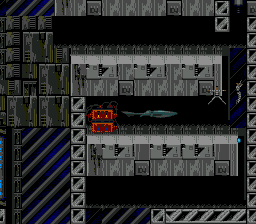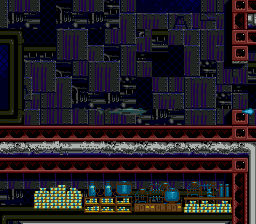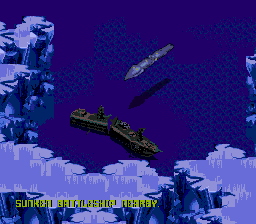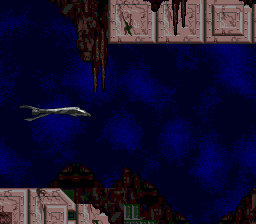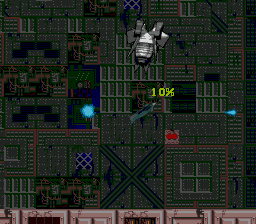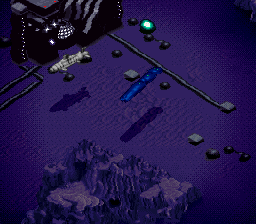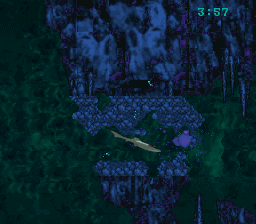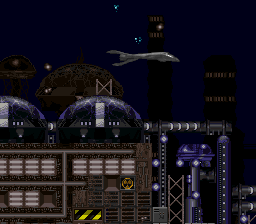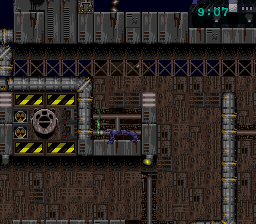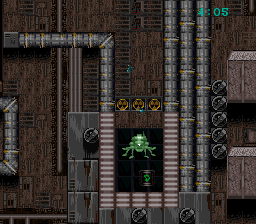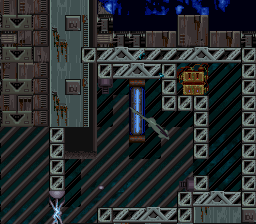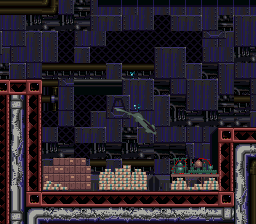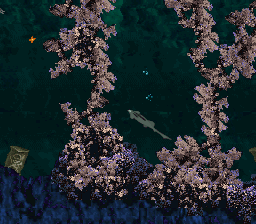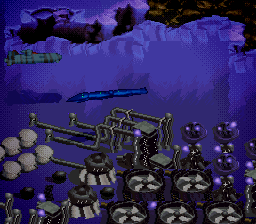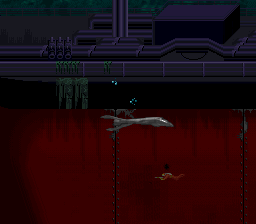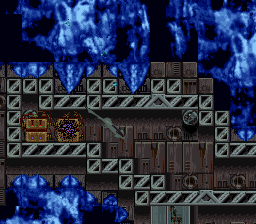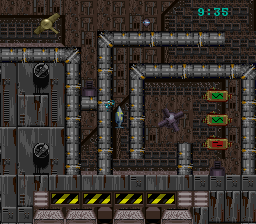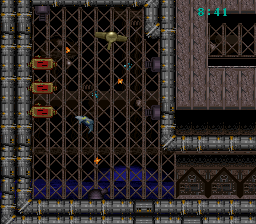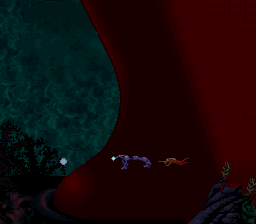SeaQuest DSV was a sci-fi TV series from 1993 which ran for just three seasons in as many years, totaling 59 episodes. Best described as Star Trek meets James Cameron’s The Abyss, each episode detailed the adventures aboard the United Earth Oceans Organization’s eponymous Deep Submergence Vehicle, seaQuest (spelled with a lowercase S). It also starred Roy Schneider, of Jaws and Naked Lunch fame.
Although it was short-lived, and you’ll find varying opinions if you search, it really wasn’t a bad show. The second season shifted focus and went a bit weird in places, and the third season changed its name, but overall the series’ scenario of an underwater exploration crew was captivating. It also tried to integrate itself with real-world science and current events, addressing issues affecting the sea.
Despite good intentions and a promising set-up SeaQuest was ultimately cancelled, relegated to the sci-fi annals alongside such failed classics as Space Rangers and Firefly. Despite this though, it still managed to spawn four videogame adaptations of varying quality and officiality. All of them are, sadly, extremely obscure and seldom talked about.
SeaQuest DSV – Game Boy (1993)
The exact release date of the Game Boy version is lost to time: online sources all claim 1994, though the copyright screen during the intro says 1993. The precise nature of the companies involved in its creation are equally as muddled. MCA/Universal Merchandising and Amblin Television are credited for all official releases as the licensor. The Game Boy and SNES release meanwhile were published by Malibu Games, while the Mega Drive version was published by Black Pearl Software. Of course both Malibu and Black Pearl were divisions of THQ, so really they were all under the same umbrella. While the console titles were developed by Sculpted Software, the GB version was done separately by Unexpected Development. Interestingly the SQDSV games have a connection to the unreleased Akiratitles. Larry Siegel is credited as VP of development for the console versions of SQDSV, and he was also in charge of licensing Akira for development. Meanwhile Tom Meigs is credited as producer on this GB title, and was also involved in developing the Game Gear version of Akira.
I spoke to Tom who explained some background: “THQ/Black Pearl had the rights to build for all the platforms of the day – GB, SNES, Genesis. These were built in parallel, so we checked progress on all the builds for all the platforms.”
SeaQuest DSV
The GB release of SQDSV was basically a collection of minigames and, unfortunately, not that great. You start in control the of the SeaQuest vehicle itself, on a horizontal plane able to travel freely left or right. There are enemy divers, mines and ships which all drain your energy, but you can fire torpedoes to destroy them. Another button is a sonar which shows you how close you are to the next mission. After travelling in a direction which reduces the “distance meter” to zero, you can release a smaller vessel with Select.
Here begins one of several minigames, each based around one of the main vehicles from the show. With the Speeder you need to navigate a horizontal maze; the with HR Probe it’s an entire sunken ship; with the Sea Crab it’s descending down a ravine, and so on. All of these basically involve collecting special canisters, which gets repetitive fast. Sometimes there’ll be a minigame to repair broken pipes, where you weld (shoot) oncoming cracks. In some instances, such as the HR Probe level, the background graphics are so detailed it’s difficult to make out what’s going on. The music doesn’t suit the scenario and none of the minigames are especially fun.
When interviewing Tom I’d mentioned I was a big fan of the larger console versions: “I agree with you. I think they were definitely decent games for the time. I saw the SNES/Genesis all the time, I preferred them too – and liked the way they started to shape up. One problem you had with Game Boy, was not every dev had much experience on it – or wanted to, because everyone preferred console stuff!”
It would seem the limitations of the humble handheld dampened some of the enthusiasm some developers had – but I also asked about restrictions imposed by the TV company, and any other development difficulties: “I don’t remember a ton of interference [from Amblin]. There is always some when navigating the licensing world. On these graphically modest platforms, we couldn’t get into too much trouble. No major difficulties that I recall. It was excruciating to test the GB – and I remember having a hardware converter that let me test on a television which really helped preserve some of my eyesight. As with most licensed games, we had a strict timetable. For a relatively small team, we had many titles in progress.”
It’s difficult when interviewing a producer and the project they were involved with didn’t turn out to be the massive success everyone (obviously) hopes for. No one sets out to make a game that players won’t enjoy. Although the GB release of SeaQuest was the weakest and perhaps least known of the official three, it still has a place in gaming history. I asked Tom if he could recall any interesting anecdotes from that time, including the view the guys would have had from their office, to get a feeling for the atmosphere in California 1993: “We had a fun team of folks – still friends! – many interesting personalities – and I remember the time fondly. Our offices overlooked Mr. Ed’s grave (the talking horse from 1960s TV) in a large Pet Cemetery in Calabasas, CA. I later worked out of an office overlooking Bela Lugosi’s grave – so it become somewhat of a theme (overlooking graveyards). I loved the SeaQuest show. Just wish we had time to do more with it!”
Many thanks to Tom Meigs for taking the time to answer questions.
SeaQuest DSV – Genesis (1994) / SNES (1995)
If anyone’s actually played any of the SeaQuest DSV games, it’s going to be either the Mega Drive (Genesis) or Super NES versions. Released less than a year apart, the two games may superficially seem identical, but they actually have some startling differences. I tracked down a few of those involved with the games, including programmer and designer on the MD version, Medo Moreno: “The game was developed by Sculptured Software in Salt Lake City, Utah. There were separate teams for the Genesis and SNES development, although the general design was shared. Jeff Peters was the producer for the project in general, both systems, although members of both teams met together for design meetings. It seems to me the work had begun by late 1993, your release dates may be accurate. I can’t speak regarding the difference in release dates – my involvement was the Genesis version.”
This led me on to Jeff Peters who was credited under several roles on the game: “I started working at Sculptured Software in 1991 and developed 10+ titles during my time there including console and arcade games. The teams were really small back then, so we all had to wear a lot of hats to build a product, meaning we were all part of design, art or whatever was needed.” Today Jeff is with Electronic Arts.
He also explained more about they came to acquire the license: “THQ/Blackpearl had already negotiated the license by the time we were approached to build the games. Sculptured Software had a great reputation within the game business, building a lot of the hits of that era, and THQ wanted a great developer to go with what was considered a ‘world class’ license at that time. When this deal was done the pilot didn’t exist, so no one knew what the final show would look like, but with Roy Schneider and Spielberg involved, expectations were extremely high.”
With the deal done prior to the show’s launch, I was curious what kind of resources Amblin were able to provide. As Peters explained: “We were promised a lot of everything from Amblin, which sounded fantastic initially. In fact they were the best and worst licensor to work with. The best part is that they approved everything we did and were extremely happy with production at every step along the way. The bad is that they delivered NONE of what they promised us. For example, we flew down to California to visit the TV sets for reference, but they wouldn’t let us take pictures of any of it to take back as reference. They also promised us the Lightwave 3D model files for all of the CG assets they used on the show, and they finally delivered them as we went final; obviously we couldn’t use them then. Our strategy was to tape the show off the air, and then re-model everything from scratch based on what aired. It was a pain, but it worked out for us.”
Given how things went, it’s impressive how good the final game ended up. It was internally coherent, managed to convey the atmosphere of the show despite not having the likenesses of the actors, plus it had some great ideas wrapped up in a very clever mission framework. The basic structure for both consoles version was you were given an expansive, isometric map to explore using the SeaQuest. While navigating this area you engage in combat with pirates and eco-terrorists, and occasionally you receive a message from the UEO detailing a mission, whereupon it’s shown on your map. Receiving missions is actually semi-random – they pop up after a set amount of time, and also after getting close to a specific area of the map. It adds a nice sense of non-linearity to the game. Once you receive a mission, if it’s time critical (such as a nuclear reactor) and you dawdle for too long it’s possible to end up with Game Over, so make sure you get there as fast as possible. Once in a mission any external timers pause, leaving you free to negotiate with the task at hand (some missions do have their own timer though). Complete all the missions in the area and you move on to the next, with a total of three overworld maps to complete before a final boss showdown.
It’s these missions that make up the bulk of the game and they are excellent. There’s some odd design choices in places and unfair difficulty spikes, but when a mission works well it’s likely to be some of the best designed gameplay you’ll experience. They’re actually a little bit like a cross between Ecco the Dolphin, in that you’re navigating underwater mazes, and The Lost Vikings, since you have six vehicles each with specific abilities, many of which need to be used in conjunction with each other to complete objectives. I asked Peters about some of the team’s influences, and what their goals were: “Ecco was an obvious inspiration since it shared both the ‘undersea’ and ‘dolphin’ concept from the show, but that wasn’t the only inspiration. Lost Vikings was another inspiration in that it used different characters with completely different traits, to solve tasks to figure out a solution to a problem. The concept of giving the player a set of tools and allowing him to figure out a solution based on those tools, inspired us in development of all the side-scrolling levels. At Sculptured Software, we were always trying to push the creative and technical envelope, and SeaQuest provided an opportunity to try new design concepts as well as technical firsts. SeaQuest was really one of the first sandbox or open-world games and the idea of freely exploring the ocean and responding to problems or missions that popped up felt like a new direction for games in the SNES/GEN era. It was also one of the first games to use actual 3D renders for animation, characters and backgrounds (before Donkey Kong Country). We were very proud of all of the firsts for this game.”
If your main SeaQuest vehicle is destroyed it’s Game Over, but if one of these smaller vehicles is destroyed you can always buy more using the in-game currency given as a reward for completing missions. You can also go scavenging for resources or destroy enemy ships for currency. This is an excellent alternative to the traditional set-up of “lives”, and it functions really well within the game narrative.
Vehicle Profiles
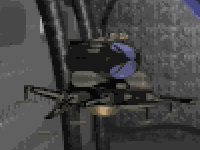
Sea Crab
Can dig through dirt in the mining side-missions, allowing collection of valuables. The SNES version also gives the Sea Crab a basic drill for self-defence, but mainly you’ll want to avoid any kind of confrontation using it. Once one of the attack vehicles have cleared an area though, this is great for carrying or collecting any key items, especially through tight spaces.
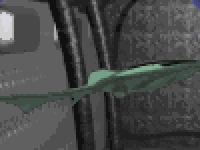
Stinger
One of two main attack vehicles. Unlike the Speeder it doesn’t have homing missiles, but it can turn 360 degrees (like in Space War!) for aiming, which compensates. The main reason for using this over the Speeder is later on when enemies are found around corners in tight mazes, or where there are plenty of vertical and diagonal passages. Especially useful in caves where you need to shoot through collapsed rocks.
Darwin
A dolphin with an aqualung so he can breath underwater, Darwin has no weapons of any kind. Controls similarly to the Stinger, but is a fair bit faster. Crucially, unlike the Stinger he can operate switches. The HR Probe is the only other vehicle to operate switches, but due its size and being locked horizontally, Darwin is needed for missions with plenty of tight squeezes. He also has his own story-specific mission, racing through a coral reef to deactivate a time bomb, which is rather cool.
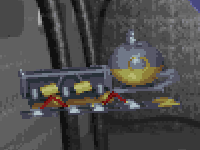
Sea Truck
The most useless vehicle in the game; you’ll only ever need it for the Plutonium mission at the start. Although it has both front and rear-weapons and controls similarly, it’s much slower than the Speeder. Its claim to fame is picking up objects, but so can the Sea Crab, which has the added bonus of being able to dig through dirt. Situations requiring object pick-up normally demand the Sea Crab anyway due to its smaller size.
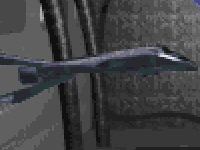
Speeder
Your workhorse throughout the game. This is the go to vehicle for destroying any kind of enemy craft, mainly since it has homing missiles. Reasonably fast, it’s also rather large and can only flip horizontally, meaning it can’t get through tight gaps unless they too are horizontal. Later on the game starts throwing lots of tight mazes at you, requiring a change to the Stinger. If in doubt, start with the Speeder to clear any nearby enemies.
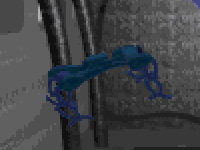
HR Probe
The only vehicle with a welding device, making it essential for mission where repairs are needed, such as the nuclear reactor or the sunken oil tanker. It can shoot small lasers as a basic weapon, but it’s maneuverability is extremely slow and ideally you don’t want it involved in combat. Both Darwin and the HR Probe can activate switches, though in areas with narrow vertical passages the HR Probe won’t be able to pass. It’s also the only vehicle that can submerge to high pressure depths, though there’s only one mission late in the game where this is required.
One great example of the excellent design in SeaQuest is the nuclear reactor level. You receive a message stating the core is about to go critical, so the race is on. Starting the level you have 10 real world minutes to complete it. First you need Darwin to flick a switch on the level’s far right, activating a giant cooling fan near the reactor entrance. There’s a security beam nearby and touching it causes the entrance door to lock-down – even speedy Darwin can’t make it through without the help of the fan to push him. Once Darwin is inside you must find the lockdown switch to permanently open the door, then using Darwin’s speed swim against the flow of the fan and then disable it. The HR Probe can make it inside to disable the door, but it will be trapped inside afterwards due to the fan. Once the fan is off you can send the Probe in to weld a series of chemical leaks, thereby allowing Darwin to return and make his way through a tiny hole too small for the Probe. Beyond is a switch that disables a series of electric barriers. Then it’s back to the Probe to swim beyond the electric barriers and weld all chemicals leaks in the level, thereby disabling a secondary lock-down at the level’s entrance. Back to Darwin, beyond a series of pneumatic crushers, and flick a switch to open the core itself. Of course this releases radiation so Darwin needs to escape quickly and switch to the Sea Crab. Once beyond the crushers the Crab can coat itself in anti-radiation shielding, grab the core and then hightail it out before the timer hits Zero. It really is a thrilling and superbly structured level.
In fact, most of the missions are really impressive in how diverse they are, and the way they work with the traditional side-on formula. Although a lot of objectives are basically collect this or destroy that, there’s enough inventiveness to keep it interesting. One mission involves using the Stinger to clear a path through a cave-in to a trapped submarine, then switching to the Crab to rescue them. Another mission requires the Speeder to clear enemies before the HR Probe can weld the holes in a sunken oil tanker. Later still you must destroy the rogue security systems in an underwater prison, complete with tiny prisoners floating upwards. There are 10 side-scrolling missions accessed from the overworld map, and three story missions – one given after completing each map (including a beautiful one where Darwin the dolphin must race through a coral reef).
Peters explained how the levels came about: “Design started from a single high-level direction which described the open world, the abilities of each ship, etc. and the over-arching structure of the game. It also set specific decisions in motion like ‘not’ using any likeness of the actors in the show. We didn’t have access to them as part of the agreement and decided it was better to focus the design on the action, not the people. From there the number of missions, story arc, etc. etc. were established as well as goals for each mission. Most of the missions were drawn out on graph paper first to get an idea of the goals, the possible solutions (regarding what ships to use when) and some ideas on visual direction. After that, each was passed over to specific engineers, artists or designers to actually ‘build.’ At that point each level evolved from its original design and many became much better as a result of specific focus by those individuals. Iteration and frequent playtesting was part of the Sculptured culture as were designer/artist friendly tools to be able to make changes quickly and retest.”
It’s not all perfect though, and as mentioned there are major difficulty spikes. Which in a way makes it the kind of game which is now best enjoyed through emulation, since this makes for an easier time with some particularly tough sections. The worst is probably the bomb disposal. With the bomb disposal stage you’re so deep underwater only the HR Prope can survive the crushing pressure. At the stage’s end you need to cut three wires in the correct order, without any clue as to which. This gives first-time players a 1-in-6 chance of guessing correctly. I asked Peters if he could recall this level and how he felt about the difficulty: “I don’t recall that level specifically, but I can say that due to the fact that different people ended up with responsibility for finishing different levels, it was hard to get a cohesive difficulty ramp from beginning to end. That combined with certain missions would appear at non-linear times in the game, you’d have various difficulty spikes. With more time to test the game as a whole we could have smoothed it out a bit, but this one didn’t have that time left at the end, unfortunately.”
For those struggling with the bomb disposal section. MD: yellow, green then blue. SNES: middle-brown, left-red, right-orange.
Given the praise raised so far, and despite some weaker points, the big question is which version to play? Traditionally between the MD and SNES it normally comes down to the SNES looking better, thereby making it the definitive platform for multiformat games. Certainly the SNES release of SeaQuest looks better, but the two games are probably only 85% similar. First are little things, like air-bubbles rising from vehicles in the SNES version, which enhances the underwater atmosphere. The MD release lacks these, but it does have aquatic wildlife in the levels, which you’re fined for killing, making things feel more interactive and alive. There’s also a cool resource-collection level unique to the MD, set in what appears to be the ruins of Atlantis. In fact the subtle story differences between the two are rather odd. On the MD you’re given much more detailed debriefings after each mission, where the UEO congratulates you, explaining why your actions have helped them. It really goes a long way to making you feel like part of the story. Unfortunately the SNES just gives you a line of text, saying something like: Mission Accomplished. Then again, there is a bit more bite on the SNES – in the sunken oil tanker mission the enemies are called Eco Terrorists, whereas on MD they’re simply to referred to as “unidentified enemy ships.”
There’s countless little differences in the overworld maps too; for example in the MD release you need to shoot open the cave before rescuing the submarine, in the SNES it’s already open. There’s also a LOT more overworld enemies in the MD version, making it rather difficult in places. While there are less enemies on SNES, there are more environmental hazards in its side-scrolling sections. Due to less buttons on the MD pad raising and submerging the SeaQuest itself requires holding C and pushing either up or down, while on the SNES there’s a button for each. Also, while the MD had several gradations of depth, in the SNES there’s only three: bottom, middle and top. Unfortunately this makes combat a lot trickier on MD. On the plus side, the MD map is detailed, showing every enemy in the overworld plus your position, whereas the SNES map is smaller and doesn’t show much at all, making navigation trickier. While overworld control of the SeaQuest is much easier on the SNES, the side-on control for the Speedier is worse than on the MD. The vehicle at al times stay central, making it difficult to avoid enemies beyond the screen’s edge – whereas on the MD the screen actually scrolls in the direction the Speeder is facing, giving you much more room to manoeuvre.
It doesn’t matter which way you cut it between the SNES and MD release, it’s six of one and half a dozen of the other when it comes to the good and bad points. The most significant difference though is the password and checkpoint system. On the MD you gain passwords after each mission is completed, thereby removing much frustration and giving it a decent difficulty curve. On the SNES you only get one password between each map (for a total of 3 passwords!). Considering that the overworld maps can take as long as an hour or more, this renders the SNES version almost unplayable. Take for example the second map. If you die on the reactor level, you not only lose perhaps the 30-45 minutes of progress you had, but you’re placed at the start of an incredibly tough intermediary story mission using the Speeder. Even if you completed several other missions already, you need to redo all of them again.
I raised the question of these differences with Peters, citing my 85% estimate: “You are correct. About 85% was indeed shared, but based on the different technologies of the platforms (processors, RAM and color palettes) we were always trying to get the most out of the console. That also means allowing each platform to make different decisions as necessary. The teams did share the art, design and management, but the engineering groups were different and that also meant different executions to solve the same problem at times.”
So, which version should you play? Well, if you’re going for the authentic cartridge experience the MD release, since its superior checkpoint system is essential. If you’re comfortable with emulation and can do so on a TV, then the SNES release, since the improved visuals really make it worthwhile. Seeing the increased colours on the SNES should convince you that this was how SeaQuest was meant to be played.
Wanting to know more about the atmosphere at the time, I also asked Moreno what working on SeaQuest was like: “It was the most bizarre development atmosphere that I had been associated with up to that time.”
I raised this with Peters, for his view, and he revealed how a lot of content never made it into the final game: “This overall team had many extremely strong personalities which made development bizarre indeed, so yes, I agree with that statement. One programmer, for example, would tear apart his office and reconstruct it once a week, including power saws, hammering and general construction noise that would fill the entire office. The time frame was also tight for such an ambitious game, in which the final date was always looming over everyone’s heads. In fact the design itself called for even more ambitious features, and there’s a lot that had to go on the cutting room floor before final. Too add to the madness, Sculptured Software usually had 10-15 games in development at the same time, so there were pressures to move staff between different projects as needed or even people working on multiple projects at the same time; it was definitely a hectic environment most of the time.”
Finally, I asked Peters to share his enduring memories of the project: “The single strongest memory has to do with watching the pilot episode of the TV show finally making it to air. We were so excited about the property, even though we weren’t allowed to see dailies or WIP, so the first time we actually got to see the show is the same time the rest of the world did, with the airing of the original Pilot. The collective emotional reaction to the first episode was something to the tune of, “Oh crap!” THQ kind of had the same reaction and the ratings only went downhill from there. There used to be a weird unwritten rule for licensed video games in the late 1980s and early 1990s that there’s two places you don’t make games from: 1) any themes underwater and 2) TV licenses. SeaQuest was both.”
Comparison Screenshots
SeaQuest – ZX Spectrum (1998)
Lacking the DSV sub-moniker, this is an unofficial game from the ex-Soviet Union, with very little information available in English. In fact according to a ZX Spectrum fansite it’s only a demo, and they don’t even know what country it’s from stating: it could be Russian, from Belarus, or Ukrainen. Given that the screenshots prominently show the UEO logo though, it seemed worth including here. Apparently it’s a text adventure of some sort. Read more here.
